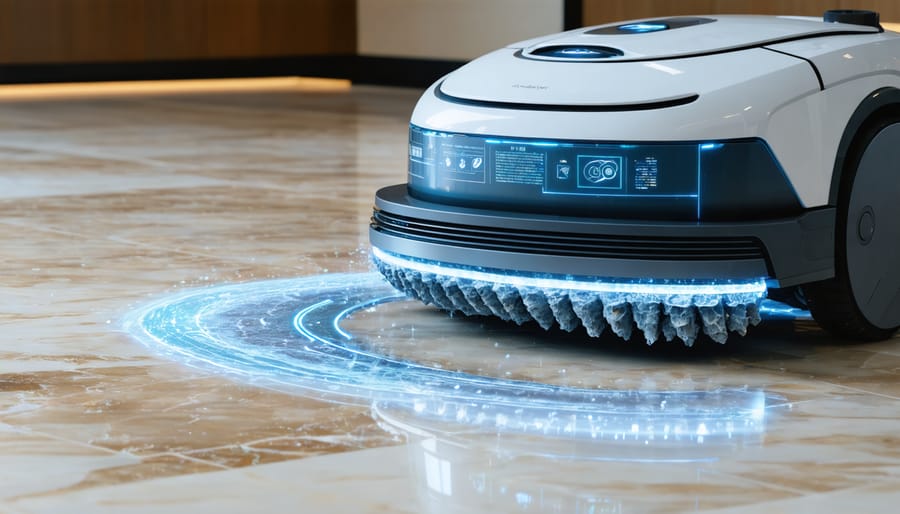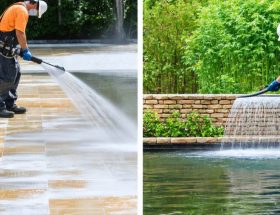Natural stone care has undergone a dramatic transformation in the past decade, blending cutting-edge technology with environmentally conscious practices. Today’s stone conservation techniques utilize advanced nanotechnology, precision-controlled cleaning systems, and biodegradable solutions that protect both the stone and the environment.
Modern stone maintenance no longer relies on harsh chemicals and abrasive cleaning methods. Instead, sophisticated surface analysis tools identify specific stone compositions, allowing for tailored treatment protocols that extend the life of marble, granite, and limestone surfaces. These developments have revolutionized how we preserve historical architecture while meeting contemporary sustainability standards.
For property owners and facility managers, this evolution means more effective, longer-lasting protection for stone surfaces with significantly reduced maintenance costs. Advanced sealants now offer microscopic barriers against stains and wear, while automated cleaning systems provide consistent care without the risk of human error. These innovations ensure that natural stone remains a practical and prestigious choice for both commercial and residential applications.
The Revolution in Stone Cleaning Technology
Nano-Technology Cleaners
Nanotechnology has revolutionized stone care by offering unprecedented protection against weathering and erosion factors. These advanced cleaners operate at the molecular level, utilizing particles typically ranging from 1 to 100 nanometers in size. Unlike traditional cleaners, nano-tech solutions create an invisible, breathable barrier that bonds directly with the stone’s surface structure.
The key advantage of nano-tech cleaners lies in their ability to penetrate deep into the stone’s microscopic pores while maintaining its natural appearance and texture. These solutions form a protective matrix that repels water, oil, and other contaminants without sealing the stone completely, allowing it to maintain its natural vapor permeability.
When applied, nano-tech cleaners self-organize into an ultra-thin protective layer that’s just a few molecules thick. This layer provides superior stain resistance and makes routine cleaning significantly easier. The technology also offers long-lasting protection against UV damage, helping to prevent color fading and surface degradation.
What sets nano-tech cleaners apart is their ability to maintain the stone’s natural characteristics while providing enhanced protection. The molecular-level bond created between the cleaner and the stone surface is far more durable than traditional sealers, often lasting several years before requiring reapplication.
For best results, these cleaners should be applied by professionals who understand proper application techniques and can ensure optimal coverage. While the initial investment might be higher than conventional cleaners, the extended protection period and reduced maintenance needs make nano-tech solutions a cost-effective choice for long-term stone preservation.
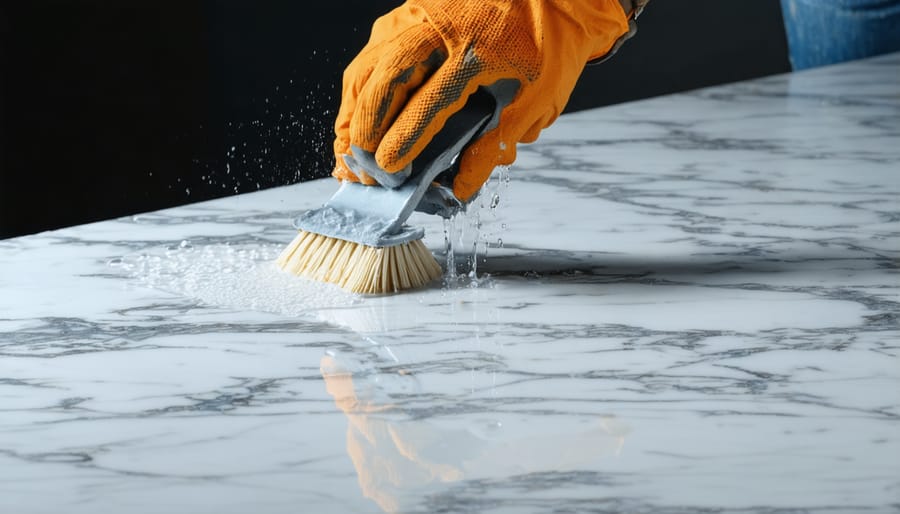
UV-Light Sanitization
UV-light sanitization represents a cutting-edge approach in modern stone care, utilizing ultraviolet light’s natural antimicrobial properties to effectively clean and disinfect natural stone surfaces. This chemical-free method has gained significant traction in both residential and commercial applications, particularly in environments where maintaining pristine, hygienic conditions is paramount.
The technology works by exposing stone surfaces to specific wavelengths of UV light, typically UV-C (254 nanometers), which disrupts the DNA of microorganisms, rendering them inactive and unable to reproduce. This process is especially effective against bacteria, viruses, and other pathogens that might be present on stone surfaces in kitchens, bathrooms, or high-traffic commercial areas.
One of the primary advantages of UV sanitization is its non-invasive nature. Unlike harsh chemical cleaners, UV light doesn’t cause etching, discoloration, or degradation of stone surfaces. This makes it particularly suitable for delicate materials like marble, limestone, and other calcium-based stones that are sensitive to acidic cleaning products.
However, it’s important to note that UV sanitization should be part of a comprehensive stone care routine rather than a standalone solution. While effective for sanitization, it doesn’t remove physical dirt or stains. Professional UV cleaning systems often incorporate safety features to protect users from UV exposure and typically include precise timing mechanisms to ensure optimal treatment duration without overexposure.
The technology continues to evolve, with newer systems featuring automated coverage detection and portable options for spot treatment, making it increasingly accessible for both professional stone care providers and facility maintenance teams.
Smart Maintenance Systems
Sensor-Based Monitoring
Modern stone maintenance has been revolutionized by the integration of sensor technology, offering unprecedented precision in monitoring stone conditions. These advanced sensors utilize various detection methods, including moisture content measurement, surface temperature monitoring, and microscopic crack detection, to provide real-time data about stone health.
Embedded moisture sensors can alert facility managers when water penetration reaches concerning levels, preventing potential damage before it becomes visible. Similarly, thermal imaging sensors track temperature variations across stone surfaces, identifying areas of thermal stress that might lead to cracking or deterioration.
Ultrasonic sensors play a crucial role in detecting subsurface anomalies and structural changes within the stone. These devices emit high-frequency sound waves that bounce back differently when encountering voids, cracks, or material changes, creating detailed maps of stone integrity.
Smart monitoring systems now integrate multiple sensor types into a single network, providing comprehensive stone condition reports through mobile applications. These systems can automatically schedule maintenance based on actual wear patterns rather than fixed time intervals, optimizing care routines and reducing unnecessary treatments.
The data collected by these sensors helps create predictive maintenance models, allowing property owners to address potential issues before they escalate into costly repairs. This proactive approach not only extends the life of stone installations but also ensures they maintain their aesthetic appeal with minimal intervention.
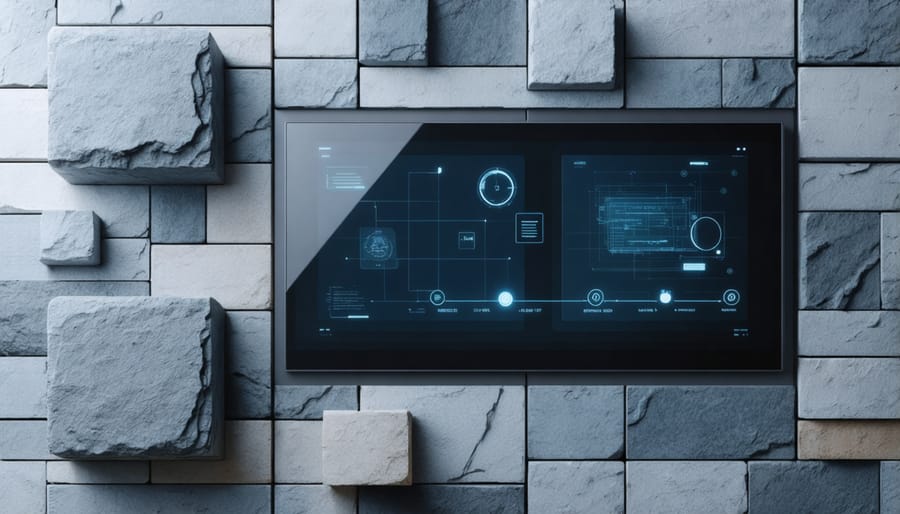
Automated Cleaning Systems
The evolution of stone care has taken a significant leap forward with the introduction of automated cleaning systems. These innovative solutions combine advanced robotics with precise cleaning technologies to maintain stone surfaces with unprecedented efficiency and consistency. Modern automated systems utilize sensors and programmable controls to detect surface conditions, adjusting cleaning parameters in real-time for optimal results.
Robotic floor cleaners specifically designed for stone surfaces now feature multiple cleaning modes, from gentle maintenance cleaning to intensive restoration processes. These machines employ specialized pad systems and carefully calibrated pressure controls to prevent damage while effectively removing dirt and contaminants. Many models incorporate advanced water management systems that minimize moisture exposure, crucial for protecting sensitive stone materials.
Commercial facilities have embraced larger automated systems that can clean vast stone surfaces with minimal human intervention. These systems often include features like automatic chemical dosing, multi-stage cleaning processes, and self-adjusting brush pressure. Some advanced models even utilize artificial intelligence to learn cleaning patterns and optimize their performance over time.
For residential applications, compact automated cleaners offer scheduled maintenance programs that help maintain stone surfaces with consistent care. These units can navigate around obstacles, remember room layouts, and operate during off-hours, making them particularly valuable for busy households and small businesses.
While automated systems represent a significant investment, they often prove cost-effective by reducing labor requirements, ensuring consistent results, and preventing damage from improper cleaning techniques.
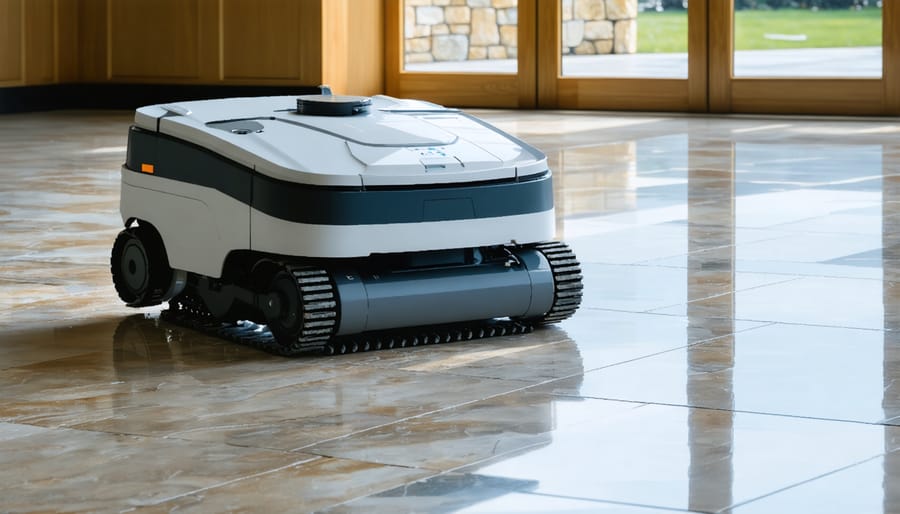
Eco-Friendly Solutions
Chemical-Free Cleaning Methods
Modern stone care has evolved to embrace eco-friendly solutions that are both effective and safe for the environment. Steam cleaning stands out as a chemical-free method that uses only water heated to high temperatures to dissolve dirt and kill bacteria. This technique is particularly effective on porous stones like limestone and travertine, leaving surfaces pristine without harmful residues.
Microfiber technology has revolutionized daily stone maintenance, utilizing specially designed fibers that trap dirt and debris without the need for harsh chemicals. When combined with pure water, these advanced materials can handle most routine cleaning tasks effectively.
Ultrasonic cleaning systems represent another breakthrough in chemical-free stone care. These devices use high-frequency sound waves to create microscopic bubbles that implode against the stone surface, removing dirt and grime without damaging the stone’s finish. For outdoor applications, pressure washing with carefully controlled water pressure provides excellent results without chemical cleaners.
pH-neutral solutions derived from natural ingredients like citrus oils and plant-based surfactants offer an alternative when some cleaning agent is necessary. These biodegradable options maintain stone’s natural beauty while protecting both the environment and human health.
Modern stone care has evolved significantly, combining cutting-edge technology with preservation best practices to ensure the longevity of natural stone surfaces. Today’s advanced cleaning systems, eco-friendly sealants, and precision maintenance tools have revolutionized how we protect and maintain stone installations. Looking ahead, the industry continues to innovate with smart monitoring systems, sustainable cleaning solutions, and automated maintenance technology. These developments promise even more efficient, cost-effective, and environmentally responsible stone care solutions. As our understanding of stone preservation grows and technology advances, property owners and professionals can expect increasingly sophisticated yet user-friendly solutions for maintaining the beauty and integrity of natural stone surfaces for generations to come.

